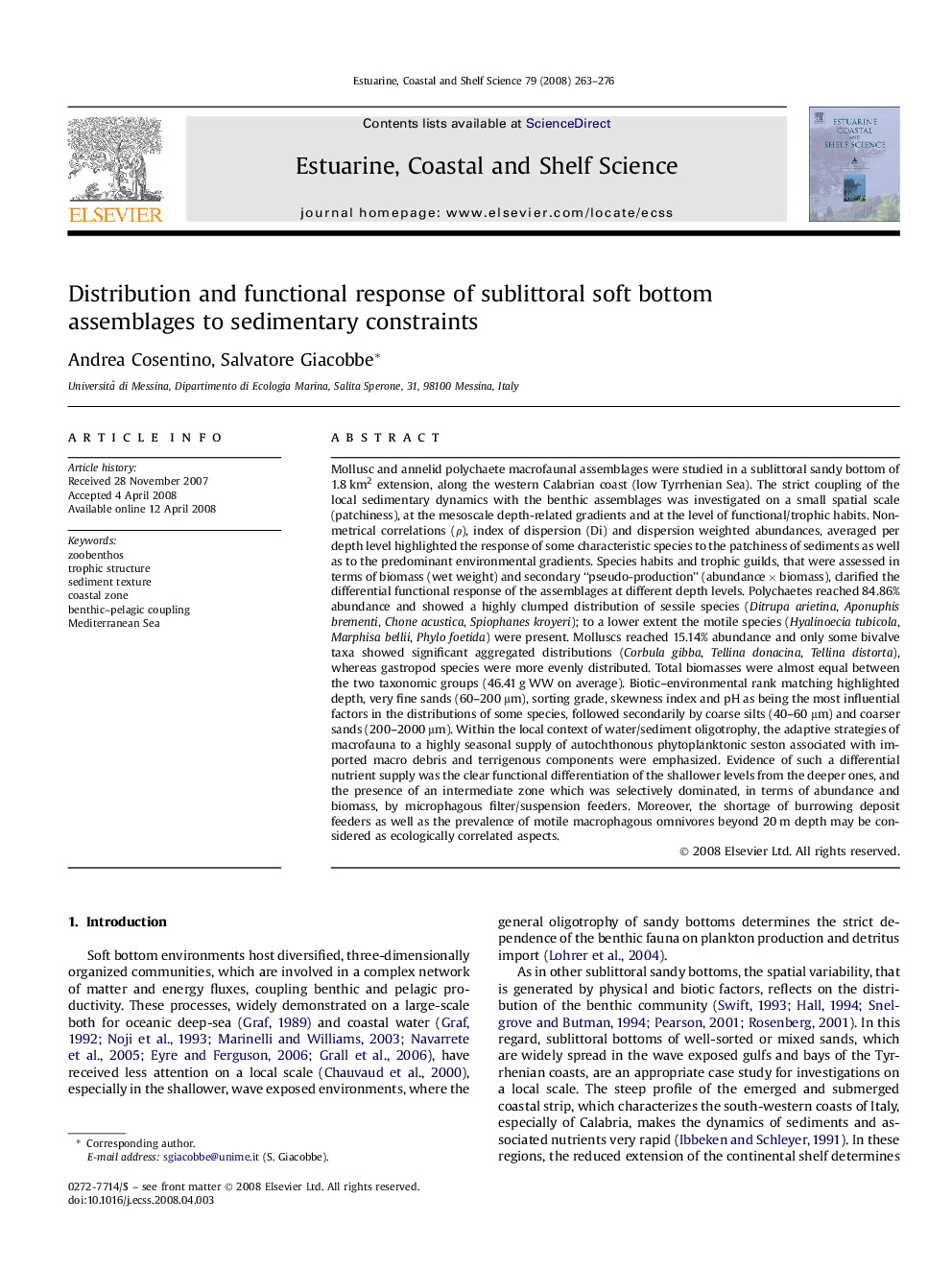| کد مقاله | کد نشریه | سال انتشار | مقاله انگلیسی | نسخه تمام متن |
|---|---|---|---|---|
| 4541828 | 1326740 | 2008 | 14 صفحه PDF | دانلود رایگان |

Mollusc and annelid polychaete macrofaunal assemblages were studied in a sublittoral sandy bottom of 1.8 km2 extension, along the western Calabrian coast (low Tyrrhenian Sea). The strict coupling of the local sedimentary dynamics with the benthic assemblages was investigated on a small spatial scale (patchiness), at the mesoscale depth-related gradients and at the level of functional/trophic habits. Non-metrical correlations (ρ), index of dispersion (Di) and dispersion weighted abundances, averaged per depth level highlighted the response of some characteristic species to the patchiness of sediments as well as to the predominant environmental gradients. Species habits and trophic guilds, that were assessed in terms of biomass (wet weight) and secondary “pseudo-production” (abundance × biomass), clarified the differential functional response of the assemblages at different depth levels. Polychaetes reached 84.86% abundance and showed a highly clumped distribution of sessile species (Ditrupa arietina, Aponuphis brementi, Chone acustica, Spiophanes kroyeri); to a lower extent the motile species (Hyalinoecia tubicola, Marphisa bellii, Phylo foetida) were present. Molluscs reached 15.14% abundance and only some bivalve taxa showed significant aggregated distributions (Corbula gibba, Tellina donacina, Tellina distorta), whereas gastropod species were more evenly distributed. Total biomasses were almost equal between the two taxonomic groups (46.41 g WW on average). Biotic–environmental rank matching highlighted depth, very fine sands (60–200 μm), sorting grade, skewness index and pH as being the most influential factors in the distributions of some species, followed secondarily by coarse silts (40–60 μm) and coarser sands (200–2000 μm). Within the local context of water/sediment oligotrophy, the adaptive strategies of macrofauna to a highly seasonal supply of autochthonous phytoplanktonic seston associated with imported macro debris and terrigenous components were emphasized. Evidence of such a differential nutrient supply was the clear functional differentiation of the shallower levels from the deeper ones, and the presence of an intermediate zone which was selectively dominated, in terms of abundance and biomass, by microphagous filter/suspension feeders. Moreover, the shortage of burrowing deposit feeders as well as the prevalence of motile macrophagous omnivores beyond 20 m depth may be considered as ecologically correlated aspects.
Journal: Estuarine, Coastal and Shelf Science - Volume 79, Issue 2, 20 August 2008, Pages 263–276